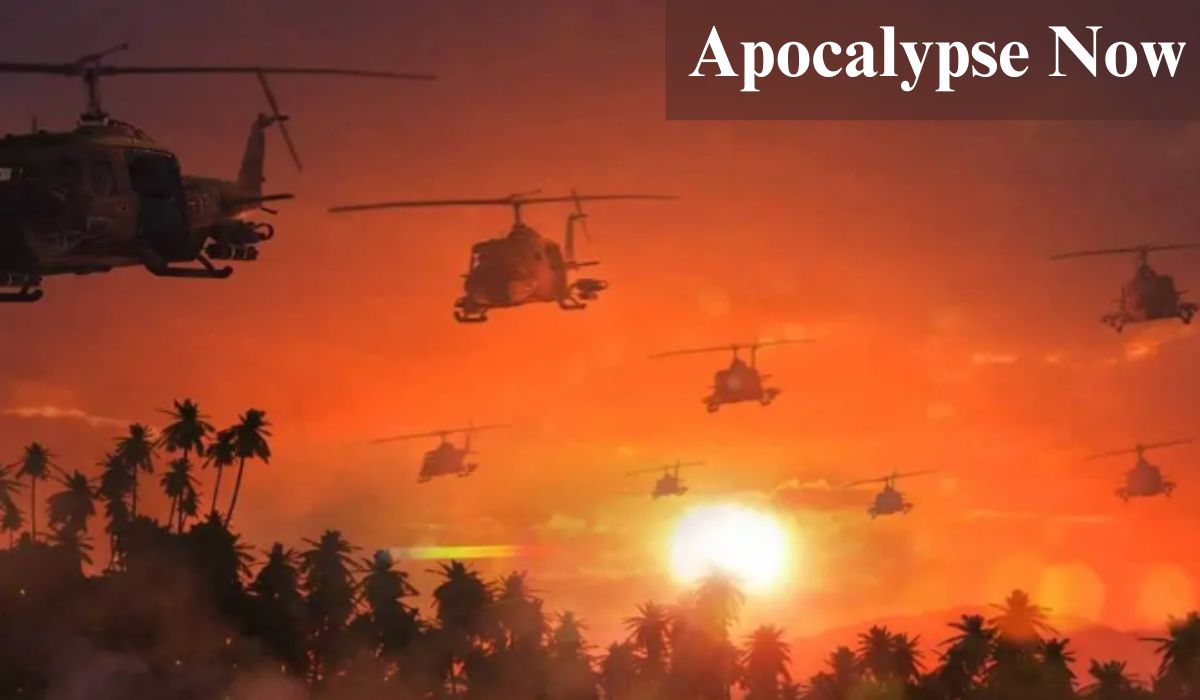Apocalypse Now: A Descent into Madness and the Horrors of War
- February 21, 2025
- 0
More Than Just a War Film Francis Ford Coppola’s Apocalypse Now is more than just a war movie—it is a haunting exploration of the human psyche, the moral
More Than Just a War Film Francis Ford Coppola’s Apocalypse Now is more than just a war movie—it is a haunting exploration of the human psyche, the moral

Francis Ford Coppola’s Apocalypse Now is more than just a war movie—it is a haunting exploration of the human psyche, the moral ambiguities of conflict, and the thin line between civilization and savagery. Set during the Vietnam War, the film follows Captain Benjamin Willard, a U.S. Army officer assigned a secret mission: to assassinate Colonel Walter E. Kurtz, a decorated Special Forces officer who has gone rogue. What unfolds is not just a physical journey but a descent into the darkness of war and the human soul.

The film opens with Willard (Martin Sheen) in a Saigon hotel room, grappling with the psychological toll of war. He is a man already broken by violence and chaos, yet he is chosen for one final mission. His orders are clear: locate and eliminate Colonel Kurtz, who has abandoned his post and established his own brutal kingdom deep in the Cambodian jungle.
As Willard travels up the Nung River, the journey becomes a metaphorical voyage into the unknown. The river symbolizes the transition from the structured world of military command to Kurtz’s lawless domain. Along the way, Willard witnesses the absurdities and horrors of war, from a surreal USO show with Playboy Playmates to a devastating helicopter attack set to Wagner’s Ride of the Valkyries. Each stop strips away another layer of sanity, exposing the madness that war breeds.
Marlon Brando’s portrayal of Colonel Kurtz is the enigmatic heart of the film. By the time Willard reaches him, Kurtz has transformed from a brilliant officer into a self-proclaimed demigod, leading a cult-like army. His monologues about war’s brutality and hypocrisy are among the film’s most chilling moments. He speaks of the “horror” he has witnessed, the moral compromises required to win, and the futility of traditional ideals.
Kurtz’s descent into savagery is a reflection of the film’s broader themes—the loss of humanity in war and the futility of trying to impose order on chaos. His tragic transformation serves as a grim warning about the cost of absolute power and unchecked violence.
One of Apocalypse Now’s most striking themes is the fragile boundary between civilization and barbarism. Willard’s journey is not just a mission but a psychological test of his own moral compass. By the time he reaches Kurtz, he questions who the real enemy is—the rogue officer or the system that sent him on this mission.
Coppola masterfully uses cinematography and sound design to immerse the audience in the film’s nightmarish world. From napalm-scorched landscapes to the eerie glow of flares in the night, every frame serves as a reminder of war’s destruction and its impact on the human spirit.

Since its release in 1979, Apocalypse Now has remained one of the most influential war films ever made. Its exploration of moral ambiguity, the dehumanizing effects of war, and the fragility of civilization is as relevant today as it was then. The film forces viewers to confront uncomfortable truths about conflict and the darkness that lurks within human nature.
Coppola’s masterpiece is more than a war film; it is a meditation on the human condition. Kurtz embodies the ultimate consequence of losing one’s moral grounding, while Willard struggles to maintain his humanity. The film questions what happens when society’s structures collapse, leaving only our most primal instincts.
The final moments of Apocalypse Now are among cinema’s most haunting. As Willard completes his mission, Kurtz’s dying words—“The horror… the horror”—linger in the darkness. These words encapsulate the film’s central message: war is not just physical destruction but a psychological and moral abyss.
The film’s impact lasts long after the credits roll, forcing audiences to grapple with its unsettling questions. Apocalypse Now is a chilling reminder that the true horror of war is not just its violence, but what it reveals about humanity itself. In the end, it stands as a powerful testament to the resilience—and fragility—of the human spirit.